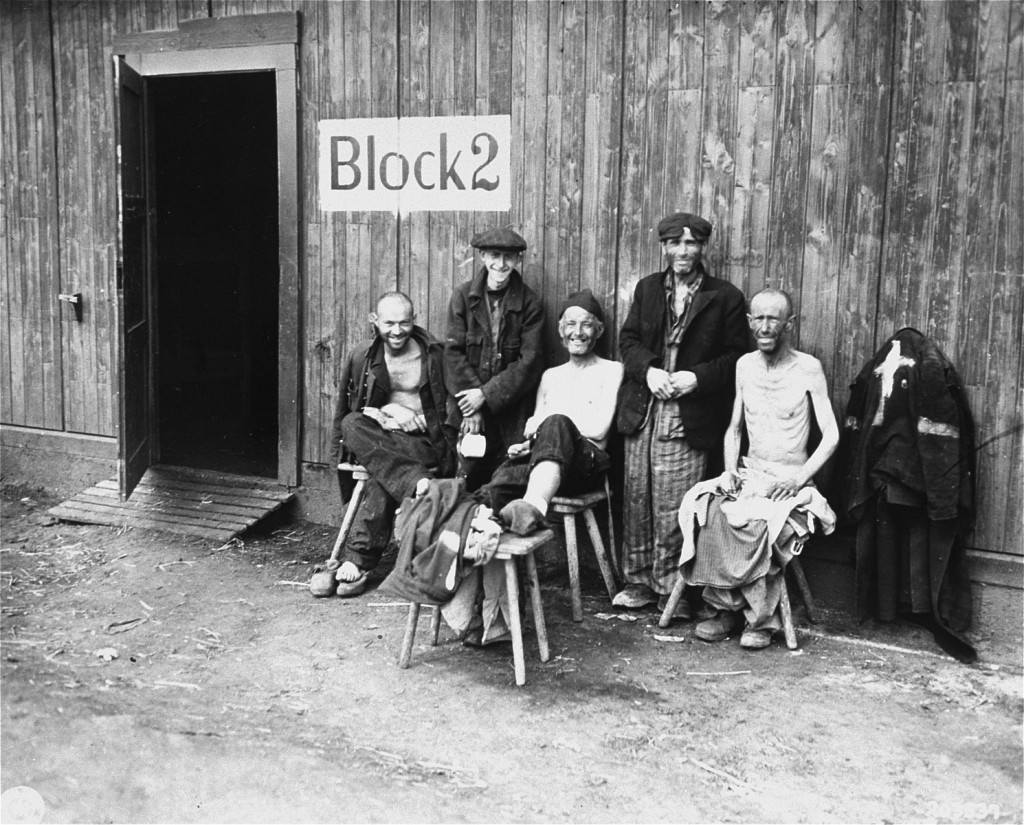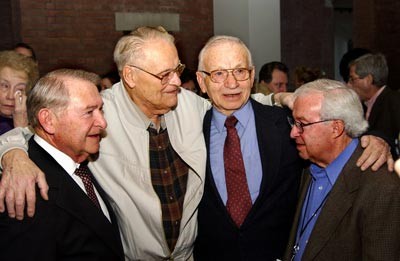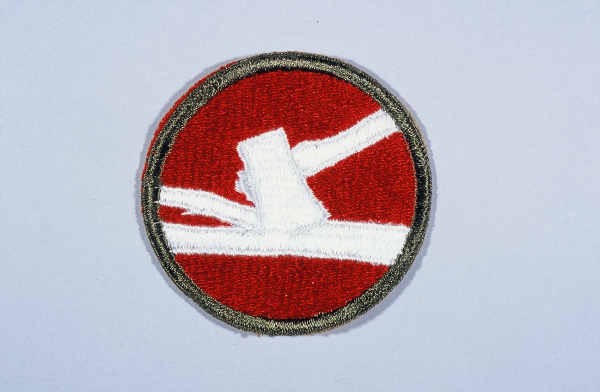The 84th Infantry Division during World War II
In 1985, the United States Holocaust Memorial Museum and the US Army Center of Military History began a program to honor US Army divisions that took part in the Allied liberation of Nazi camps. The US Army Center of Military History defines a liberating division as one whose official records show its presence at a camp within 48 hours of the first soldier’s arrival. The 84th Infantry Division is among the 36 US divisions that have been recognized to date.
Key Facts
-
1
US, British, Soviet, and Canadian troops encountered concentration camps and other sites of Nazi crimes as they advanced across Europe in 1944 and 1945.
-
2
The Allied soldiers liberated sick and starving camp prisoners from Nazi tyranny. They also provided them with food, clothing, and medical aid.
-
3
The United States Holocaust Memorial Museum and the US Army Center of Military History have recognized 36 US divisions for their role in the liberation of Nazi camps.
84th Infantry Division Campaigns during World War II
The 84th Infantry Division was formed in 1917, the year the United States entered World War I. In World War II, the "Railsplitter" division landed on Omaha Beach in Normandy in early November 1944, five months after D-Day (June 6, 1944). From France, the unit moved quickly into the Netherlands in preparation for an offensive into Nazi Germany. During the Battle of the Bulge, the 84th was diverted to Belgium to stop the German offensive. In March 1945, it moved into the Rhineland and subsequently advanced northward, capturing the city of Hannover on April 10. The 84th eventually made its way to the Elbe River and made contact with Soviet armed forces in early May 1945.
The 84th Infantry Division and the Liberation of Hannover-Ahlem and Salzwedel
As the "Railsplitter" division advanced into the interior of Germany, its troops uncovered Hannover-Ahlem (April 10, 1945) and Salzwedel (April 14, 1945), both satellite camps of the Neuengamme concentration camp. The SS established the Hannover-Ahlem camp on November 30, 1944, after transferring the camp and its inmates from the Continental Gummiwerke factory at Hannover-Stöcken. In Ahlem the inmates were forced to work in the nearby asphalt tunnels. These were to be cleared for the production of aircraft and Panzer parts for Continental Gummiwerke and Maschinenfabrik Hannover.
When the soldiers of the 84th entered the camp in Ahlem, they discovered an undetermined number of starving and ill Jewish prisoners. Reports range from 30 to 250 persons. The SS guards had abandoned these prisoners when they evacuated the camp, taking with them some 600 "healthy" prisoners. Of the prisoners sent on this death march, only 450 made it to the Bergen-Belsen camp. The SS guards had shot many of those who were unable to maintain the pace of the march. The US Army war crimes investigators reported that many of these survivors died soon after liberation from the accumulated abuse, mistreatment, and neglect they had suffered. They estimated that only 300 to 400 Jewish prisoners at Hannover-Ahlem survived the war.

Several days later, the 84th Infantry captured Salzwedel, a camp formed by the SS in July 1944 to supply forced labor for a German munitions factory. The unit found some 3,000 female inmates, mainly Jewish women who had been transported from the Auschwitz camp complex, and several hundred political prisoners. The US Army reported that sanitary conditions at the camp were poor because of overcrowding and a lack of water. Some 100 of these prisoners were seriously ill and 33 of them required immediate medical attention at a local hospital. The town's mayor was ordered to provide food immediately for the former inmates, who were subsequently moved into modern German barracks nearby.
Recognition as a Liberating Division
The 84th Infantry Division was recognized as a liberating unit by the US Army's Center of Military History and the United States Holocaust Memorial Museum in 1993.

84th Infantry Division Battle Casualty Figures
Hundreds of thousands of US servicemen and women died or were wounded in the fight against Nazi tyranny.
The total number of battle casualties for the 84th Infantry Division in the European Theater of Operations during World War II was 7,260. In this case, “battle casualties” includes all personnel who were unable to fight in battle because they were wounded, missing, captured, or killed.
Among the battle casualties suffered by the 84th Infantry Division, there were 1,468 deaths.
84th Infantry Division Nickname and Insignia
The 84th Infantry Division was activated in 1942 in the aftermath of Japan’s attack on the United States at Pearl Harbor. Established in 1917, the 84th Infantry Division was initially made up of National Guard units from Illinois, Indiana, and Kentucky. The division’s first nickname was the “Lincoln Division” because these states were linked to the life of US President Abraham Lincoln (1809-1865). Originally, the 84th’s insignia or patch showed a red ax against a white background inside a red circle. The name “Lincoln” appeared above the ax and the number “84” under it.
The 84th’s insignia was later redesigned as a red circle outlined in khaki green. In the center of the patch, sewn in white, is the image of an ax splitting a railroad tie. This symbol honors Lincoln, who was famous for his skill with an ax. Based on this insignia, the 84th became known during World War II as the “Railsplitter Division.”

Footnotes
-
Footnote reference1.
In the aftermath of World War II, the US Department of the Army compiled casualty figures for US Army personnel. The US government published these figures in 1953. The report listed casualty numbers for the US Army for the period from December 7, 1941 (Pearl Harbor) through December 31, 1946, when US President Harry S. Truman officially declared the end of war hostilities. Army Battle Casualties and Nonbattle Deaths: Final Report, 7 December 1941-31 December 1946, Prepared by the Statistical and Accounting Branch, Office of the Adjutant General, Under the Direction of the Program Review and Analysis, Division of the Comptroller of the Army, O.C.S., (Washington: Department of the Army, 1953), p. 3-4, 84-89.
Critical Thinking Questions
What challenges did Allied forces face when they encountered the camps and sites of other atrocities?
What challenges faced survivors of the Holocaust upon liberation?

